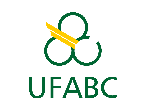Banca de DEFESA: ANANDA DE OLIVEIRA GONCALVES ANTENOR
Uma banca de DEFESA de MESTRADO foi cadastrada pelo programa.DISCENTE : ANANDA DE OLIVEIRA GONCALVES ANTENOR
DATA : 24/08/2020
HORA: 14:00
LOCAL: por participação remota
TÍTULO:
Effects of urban trees and urban green areas on the temperature of São Paulo Metropolitan region
PÁGINAS: 116
GRANDE ÁREA: Outra
ÁREA: Ciências Ambientais
RESUMO:
Urban areas tend to have higher temperatures and a decrease in relative humidity when compared to less densely occupied regions. Currently, there are few studies that relate the benefits of urban green areas due to their density, spatial distribution and how much they influence the temperature variation in their surrounding areas. In this scenario, it is essential to better understand the relationship between the presence of trees along streets, green areas and buildings in the city in order to support the planning of public policies that maximize the benefits for the population with regard to the mitigation of heat islands. The objective of the present study was to evaluate the effect of trees along streets, the presence of green areas and the density of buildings on the temperature of the São Paulo metropolitan region. Daily temperature data from 2012 to 2017 were analyzed considering the entire period, and separately the cold and hot seasons. A generalized mixed linear model selection approach was adopted in which the average daily temperature and the daily temperature variance were response variables. Metrics that reflected the amount and spatial arrangement of street trees, green areas and buildings were used as covariates. The effects of the variables were different between the hot and cold periods. In the cold season, vegetation and building density did not have a significant effect on temperature. In the hot season, the presence of green areas had a significant effect, but the number of street trees and building density did not influence the temperature. In the hot season, the amount of green areas had a negative effect on temperature, and this effect was best detected within a radius of 500 m. Public authorities should prioritize the creation of parks and squares in a well-distributed manner by the RMSP, avoiding large extents without green areas, to mitigate possible heat wave effects and provide lower temperatures in hot seasons.
MEMBROS DA BANCA:
Presidente - Interno ao Programa - 2338944 - LEANDRO REVERBERI TAMBOSI
Membro Titular - Examinador(a) Interno ao Programa - 2548506 - VITOR VIEIRA VASCONCELOS
Membro Titular - Examinador(a) Externo ao Programa - 3101230 - CAMILA MAYUMI NAKATA OSAKI
Membro Suplente - Examinador(a) Interno ao Programa - 1247586 - ANGELA TERUMI FUSHITA
Membro Suplente - Examinador(a) Externo ao Programa - 1658925 - SIMONE RODRIGUES DE FREITAS




